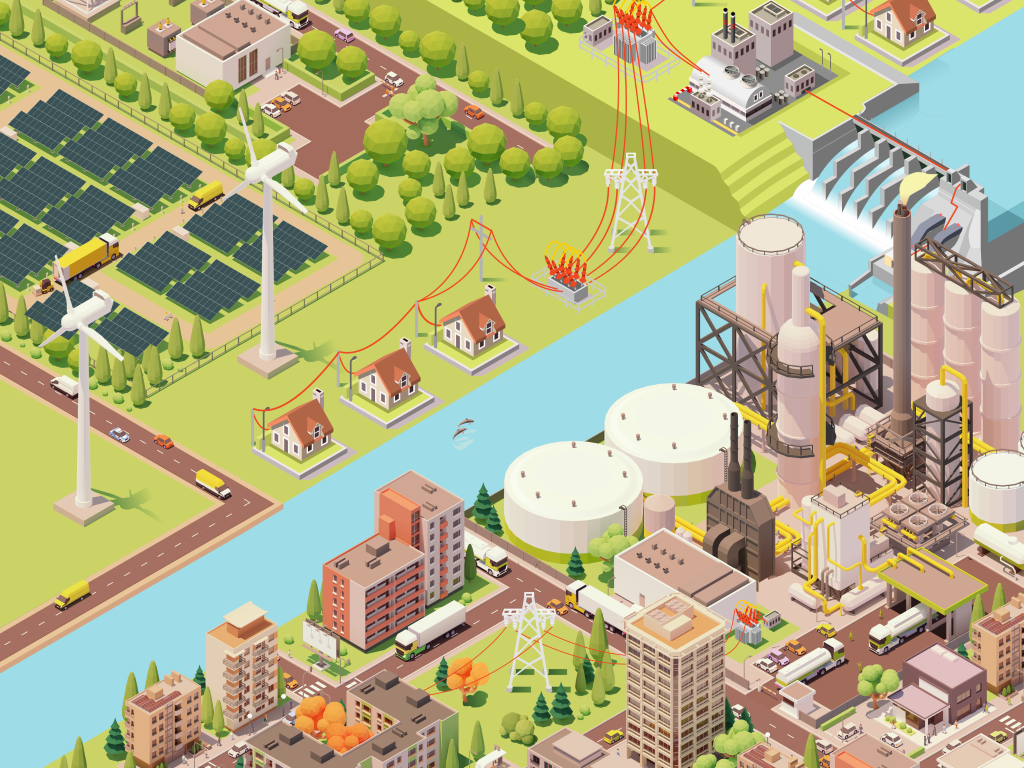ABM4EnergyTransition

(c) GISolutions
Project team:
Johannes Scholz, Georg Weinberger – Technical University Graz
Jürgen Hahn, Sandra Marcher – GISolutions e.U.
Franz Mauthner, Andreas Stöger, Ingo Leusbrock – AEE INTEC GmbH
Claudia R. Binder, Maria Anna Hecher, Simon Ladino Cano – EPFL
Nicole Strauss, Christian Sakulin – Energieagentur Stmk gGmbH
Joachim Ninaus – Stadtgemeinde Kapfenberg
Funding: Austrian Research Promotion Agency (FFG)
Duration: 2022 – 2024
Our energy system is undergoing rapid change. New technologies and opportunities such as e-mobility, digitalization, energy communities or low-temperature heating networks are entering the market, which must be reconciled with societal demands for greater sustainability and political commitments such as the Austrian heating strategy with the goal of decarbonizing the heat supply for buildings by 2040. This poses a high level of complexity for decision-makers in politics, energy supply and business. An energy-efficient and climate-friendly heat supply of the future now requires planned action, the modernization of the existing building stock, a sustainable orientation of new buildings, and the conversion of the heating supply to renewable energy sources.
In addition to the spatial dimension of energy supply and demand, increasing importance must also be attached to the social dimension of the energy transition in planning and decision-making processes. The behaviors and decision-making patterns of central actors (politics, public administration, planners, investors, energy supply companies, households), each with their own specific roles, needs and values, are highly relevant to planning in the context of heat and energy transition, but are, if at all, hardly considered in current processes.
The concrete project objective of ABM4EnergyTransition is the development and demonstration of a novel simulation approach based on agent-based modeling (ABM) for the spatial analysis and assessment of pathways for the municipal heat and energy transition. The ABM methodology considers both, spatial data to describe the energy system of a study area (buildings, grid-based energy infrastructure such as natural gas or district heating networks, renewable potentials) and parameters to describe the behavior of actors (agents) within this energy system (homeowners, investors, policy makers).
The methodological approach represents an extension of existing energy planning approaches and helps to better assess the impact of public policies on the achievement of climate and energy goals. The tangible project result will be a prototypical web application with map representation of buildings and energy infrastructure including a dashboard using two study areas in Austria, which allows users from administration and planning to plan possible energy policy and/or technical interventions in the ABM and to display the results (e.g. energy demand and energy carrier mix in spatial and temporal granularity). The results can be exported for further planning use, e.g. in spatial energy planning or district heating expansion planning, and in a local GIS system. In addition, simplified simulation scenarios can also be initialized and visualized by interested citizens in the web application for a playful examination of the topic of heat transition and energy system change.

I am contributing to this research with my doctoral project – Unraveling transformative change towards sustainability: The intertwined roles of agency and interventions in social tipping points.